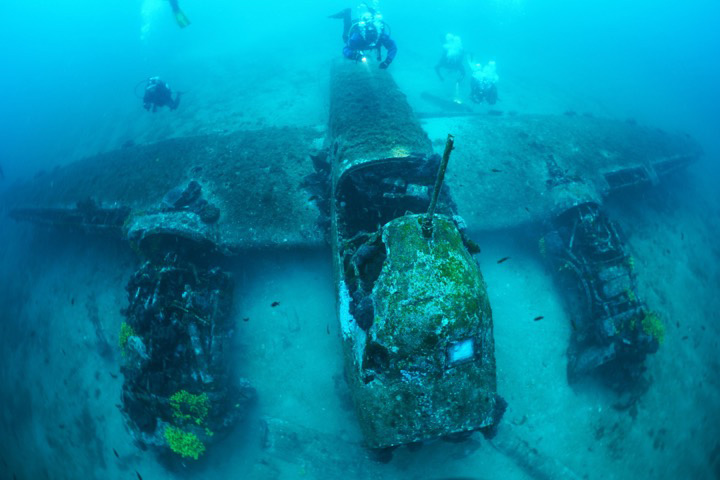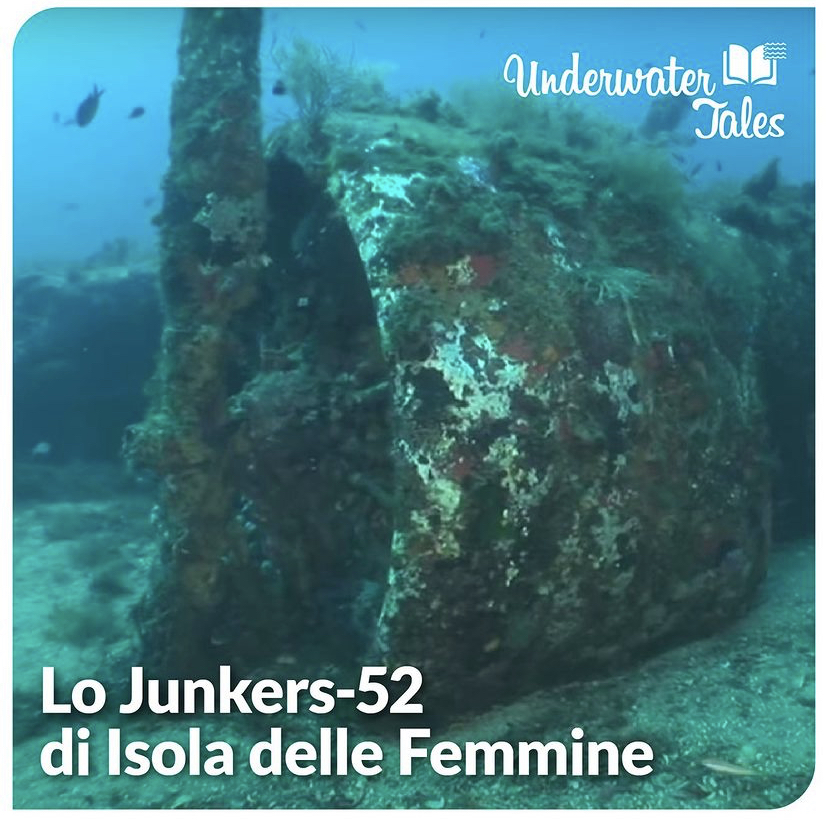The truth about the plane of Santa Caterina, the German twin-engine Junker 88 crashed about two miles off the coast of Santa Caterina di Nardò, in Salento, on the Ionian side.
How it sank into that stretch of sea is not known. The truth about the plane of Santa Caterina was unknown. It was searched for for many years without being found, to the point that it was thought of as a legend. The legend of a plane crashed off the coast of Santa Caterina during the Second World War. Only a few years ago, during a series of dives, a team of divers, led by Andrea Costantini, managed to trace his identity. It is the most widespread and effective warplane, a 15 meter long bomber with a wingspan of 20. The German twin-engine Junker 88.
Summer 2017
Thus began my article, published on this blog in the summer of 2017. I recounted my diving experiences in the presence of this plane on which I had dived many times. But above all, I asked myself a series of questions to which no one was able to give an answer. I would have liked to know the truth about Santa Caterina’s plane.
Because the sea hides many priceless secrets that could help us reconstruct our history. From the wrecks of wooden ships of the Greek-Roman era, sunk with their loads of amphorae and pottery, to the more modern ones, sunk during the world wars of the last century.
Airplanes are part of these priceless treasures.
Santa Caterina, Salento, Ionian Sea
I was on vacation in Santa Caterina, on the stretch of coast of Salento overlooking the Ionian Sea, between Gallipoli and Porto Cesareo.
Here, on an unspecified day, during the Second World War, a plane fell into the sea. Apparently he came from the south and was headed north. The elderly said they had seen a large plane fly over Santa Caterina at low altitude and then a glare, just beyond the Torre dell’Alto towards the town of Torre Inserraglio, about two miles from the coast. Maybe it was dusk, maybe it was evening. No one remembers if it happened in the summer or in another season.
For over fifty years nothing more was known. No official documents were found that could certify to the departure base, flight plan or presumed destination. The only indications came from old Navy archives that spoke of a sunken wreck near Gallipoli. Too little to be able to trace them back to the plane episode, too little to be able to start looking for it. Too little to know the truth about Saint Catherine’s plane.
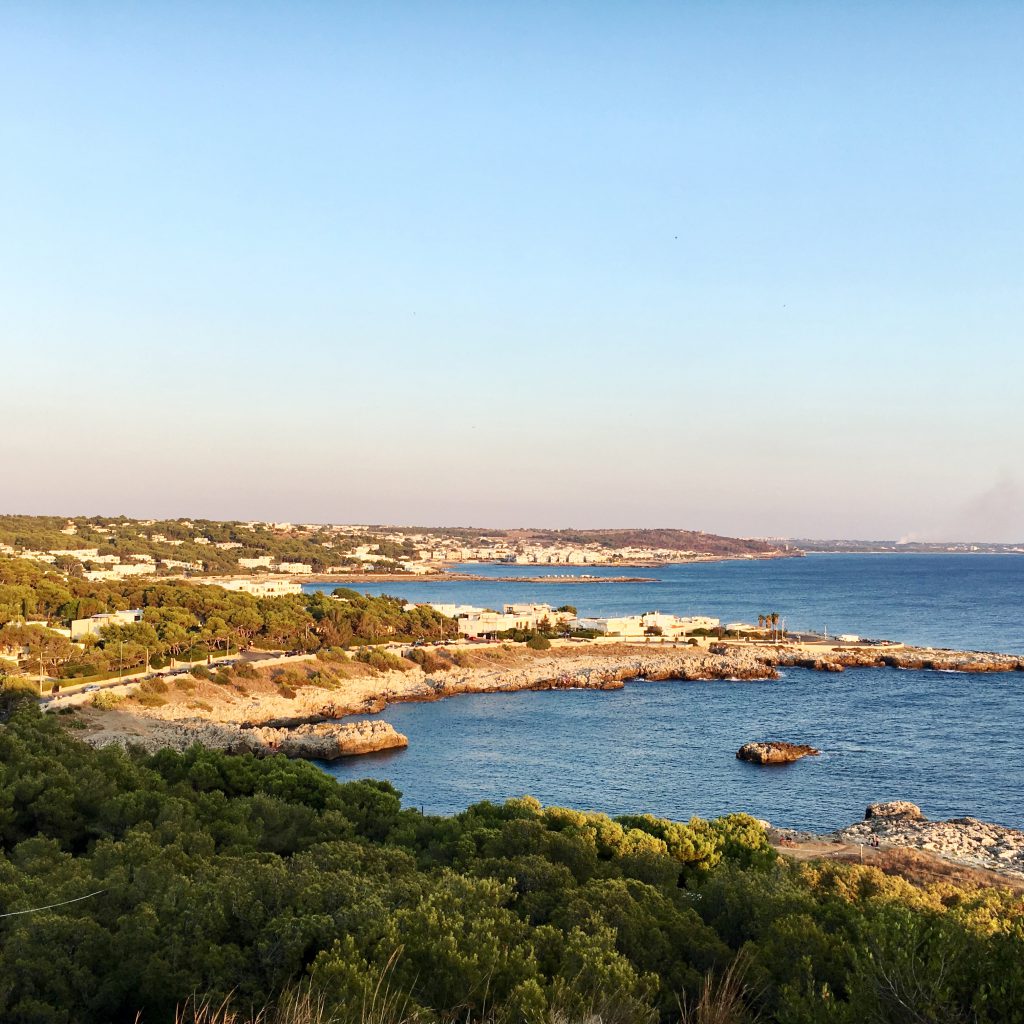
Year 2009
Finally, in 2009, a team of divers led by Andrea Costantini, after patient research and on the basis of the stories handed down and the indications of the fishermen, first managed to identify the area and then to find the plane of Santa Caterina.
It was the most widespread and effective aircraft of the Second World War: the German twin-engine Junker 88.
It was a multi-role, low-wing bomber, produced by the German company Junkers GmbH, from the mid-thirties of the last century. It was one of the columns of the Luftwaffe and was used as a bomber, night fighter, reconnaissance and torpedo car. Over 16,000 models were produced in about twenty versions.
It could be equipped with 6 machine guns and a total of 16 bombs.
The plane of Santa Caterina
The plane that fell in Santa Caterina lies, in perfect flight attitude, on a flat sandy bottom at a depth of between 33 and 35 meters. Its muzzle faces southwest.
The sea has kept it in good condition. The cockpit is open, the fiberglass cover probably shattered during the fall. Inside, the driver’s seat and part of the on-board instrumentation are clearly visible. The sea has colonized the cockpit windows. Above it, clearly visible to the diver’s eye, is the antenna mast.
The engines are partly covered by sand while the visible one has been colonized by several specimens of sponges.
Neither bombs nor machine guns have ever been found.
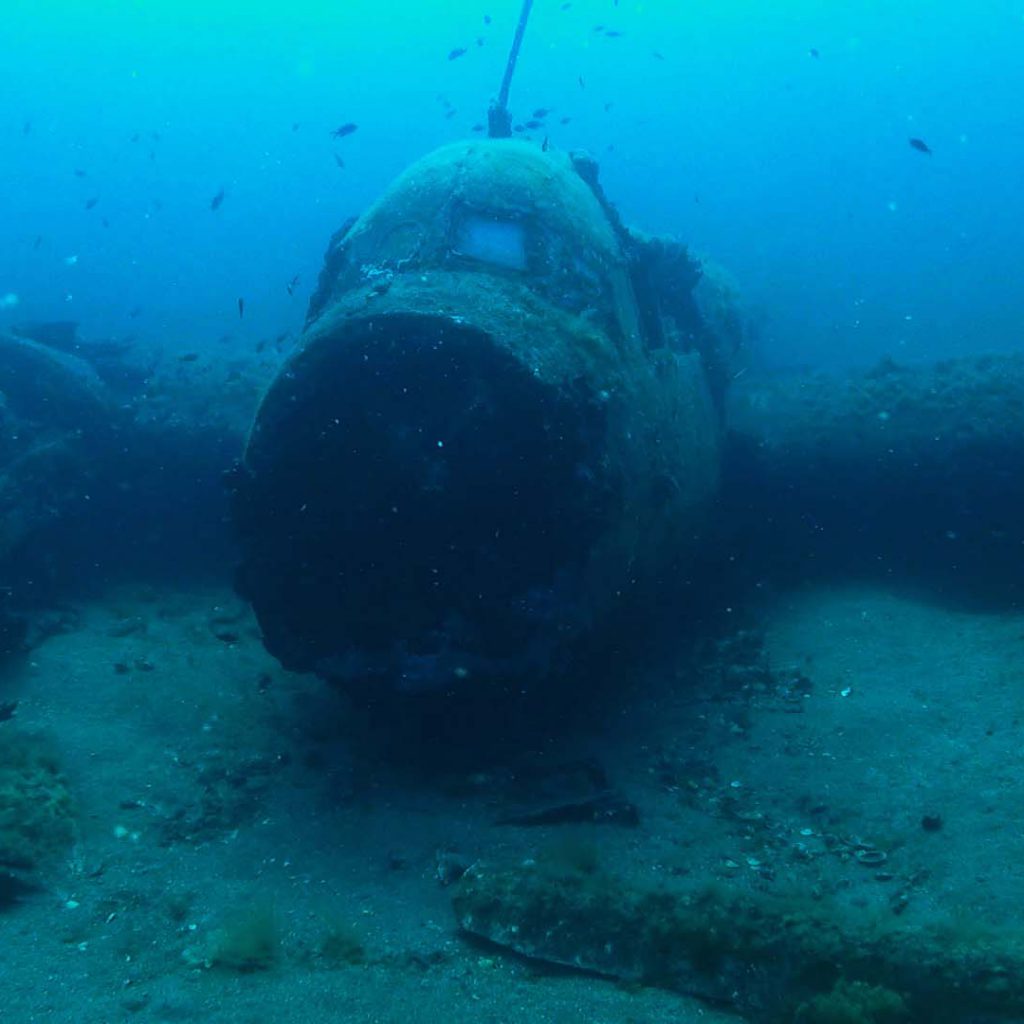
The first considerations
There were no tangible elements of an immediate bombardment and from the first reconnaissance no human remains were found, a sign that the plane probably landed for reasons not due to an enemy attack and that the crew managed to escape. The fact that the lifeboat was removed from the hatch that contained it could be a support for this thesis. At the height of this hatch, the trunk of the plane is severely broken. The tail and the wheel lie, also perfectly intact, about thirty meters behind. The swastika is visible on the tail wing, thanks to a brief cleaning of that part of the sheet.
A second reconnaissance
Only some time later, in a second reconnaissance, other plates were found. They are located about 90 degrees from the aircraft’s attitude position and could testify to the fact that the impact may have shifted the direction of flight by several degrees. Among the latest findings it is interesting to highlight the dashboard containing the oxygen cylinders.
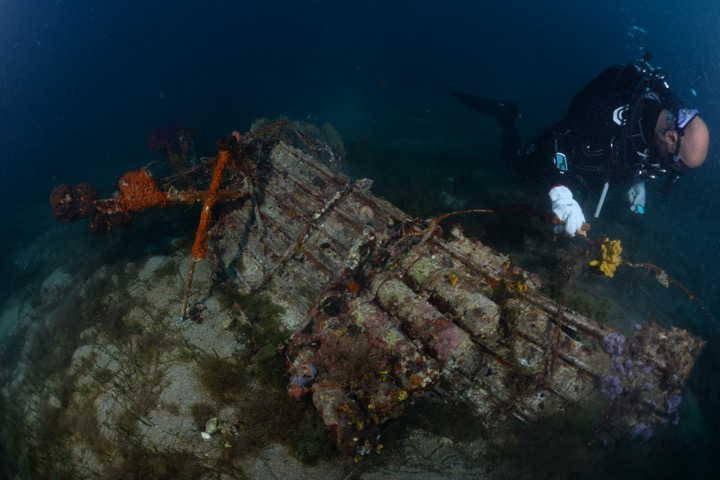
Questions and doubts
But what was this Junker 88 doing in the skies of Salento? And above all when, why and how could it have fallen into the sea?
These are questions to which today we are unable to give precise answers. Only guesses can be made, some based on historical sources. The truth about Santa Caterina’s plane is still a long way off.
First of all, of the sixteen thousand aircraft produced by Junker, in the period from 1936 to 1945, the most similar model would appear to be the version called A-4, which had the same size of the wingspan of ours.
Historical memory
The fact that many elderly people remembered the episode could suggest that the sinking may have occurred during the summer, when most of the inhabitants of the area used to move to the coast to vacation. The glow would lead back to the episode either at dawn or at dusk.
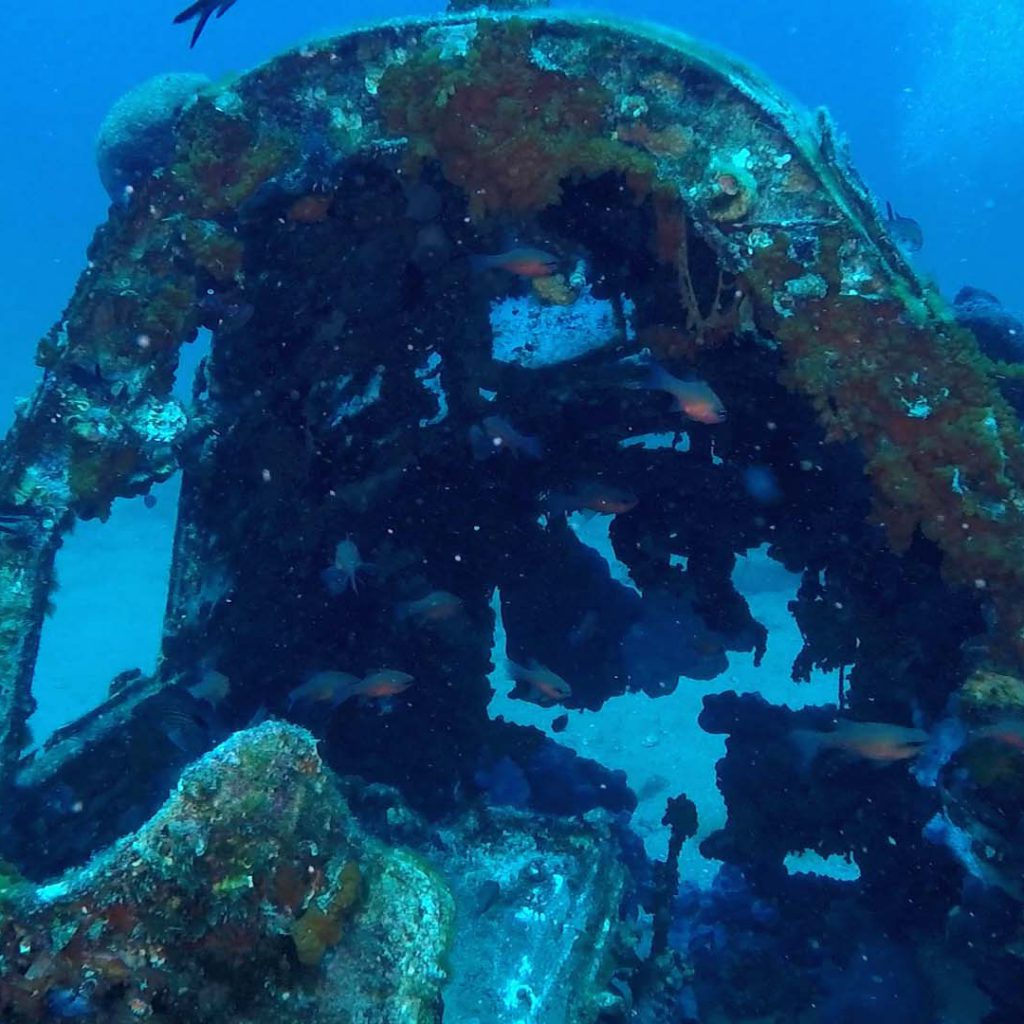
The cockpit
But these assumptions do not help to unravel the strong doubts that continue to hover. There are still too many questions that cannot be answered. Which do not allow us to know the truth about Saint Catherine’s plane.
Why, although according to the stories the plane came from the south and was headed north, today the bow lies facing southwest?
How come no weapons were found either near the wreck or in the areas in front of it?
Why were the propellers of the two engines not found?
If it is true that it has not suffered any enemy attack, why did it sink into that stretch of sea still far from the possible theater of military action?
Why was no metal plate found that could lead back to the Junker’s identity?
The plane crashed in Santa Caterina a few years ago is no longer a legend but continues to hide many, too many, secrets.
JJU88 Expedition
It was the end of that month of August when I learned that a group of divers was organizing a research expedition on the Junker 88, the plane of Santa Caterina. I participated in it.
L’obiettivo era quello di scoprire delle tracce che permettessero di conoscere l’identità dell’aereo.
The goal was to discover traces that would allow us to know the identity of the plane.
In order to trace the true origin of the Santa Caterina plane, it was necessary to recognize the model and above all the serial number written on the side. The wording was generally composed of four characters, interspersed in half by the cross symbol of the Luftwaffe. The first was the letter indicating one of the 36 bombing flocks (Kampfgeschwader – KG). The second was a number and called the group. The last two letters indicated the staffel, that is the squadron to which they belong. The penultimate letter was white to indicate that the aircraft belonged to the first staffel, red if it belonged to the second and yellow if it belonged to the third. Each squadron usually had nine aircraft.
The side of the plane of Santa Caterina is unfortunately cut off exactly at the height of the hatch that contained the lifeboat. This would make it impossible at first sight to obtain the data.
The intuition of Claudio Grazioli
However, Claudio Grazioli had a brilliant intuition. The characters of the serial number were written from left to right, therefore in a mirror image on the opposite side. Since the plane of Santa Caterina is broken right in the middle of the area on which the registration number should be affixed, if both sides had been brushed, perhaps, it would be possible to find the first two characters on one side and the others on the other two.
The teams in charge of cleaning the fuselage have highlighted a yellow spot that could be traced back to the letter k.
JunkersGmbH, from 1936 to 1945, produced about 16,000 aircraft of the Ju 88 type, in about twenty versions. The JU88-A4 was a model that had wooden propellers. Considering that our wreck has the propeller hubs completely free and devoid of any sheet metal scraps, I think it is reasonable to assume that it was equipped with wooden propellers that may have split during ditching and which in any case may have been consumed by the sea in all these years. Historical sources report that, between 1942 and 1945, several Junker 88-A4s were used by the German air force in southern Italy or more generally in the southern Mediterranean area. The KG.54 flock, for example, was in Puglia in January 1943 and, in the same year, in September, in Sardinia.
Two hypotheses
Claudio Grazioli’s incessant thirst for news also allows me to mention two other episodes that could be traced back to the sad ending of the Junker 88 of Santa Caterina. The first is dated 10 July 1943 and is mentioned in the text “Junker JU88 Kampfgeschwader in North Africa and in the Mediterranean”. On that date, the Luftwaffe suffered the loss of three aircraft, III./KG54, one of which in an accident that damaged it on its return from Grottaglie. The second is dated May 30, 1944, the day on which the Luftwaffe attacked a British convoy and sank the steamship Nordeflinge, losing however three JU-88s.
The first expedition has begun to produce some very interesting material which at the moment, however, only allows us to advance hypotheses which will have to be corroborated by subsequent inspections and verifications.
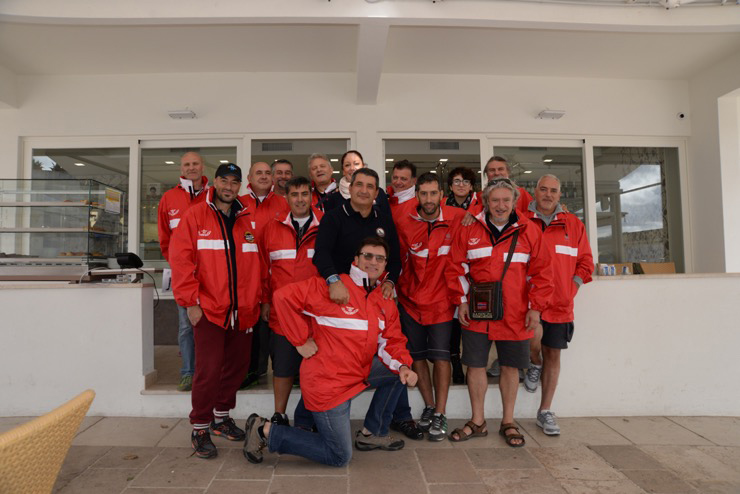
A long silence and then an e-mail
It’s been four years since that expedition and all those hypotheses. In between, there is also a pandemic. But the plane of Santa Caterina continued to hide the same secrets.
In the meantime, I am writing an article about another landed aircraft: the Junker 52 di Isola delle Femmine.
The topic arouses the interest of a reader, passionate about aviation history. Struggling with a series of Ju 88s that crashed in Tuscany and Lombardy, the curious reader came across my diving blog and decided to write me an e-mail.
And he took the liberty of putting forward this hypothesis. On 10 July 1943 the KG, to be precise the 11th Staffel, lost the Junkers Ju 88A-4 with serial number WNr5909. It happened ten kilometers west of Gallipoli, due to mechanical problems with the engines. The pilot, Officer Kurt Koeneke was injured while three crew members perished in the accident.
At this point he asked me: “Could it be the Ju 88?”
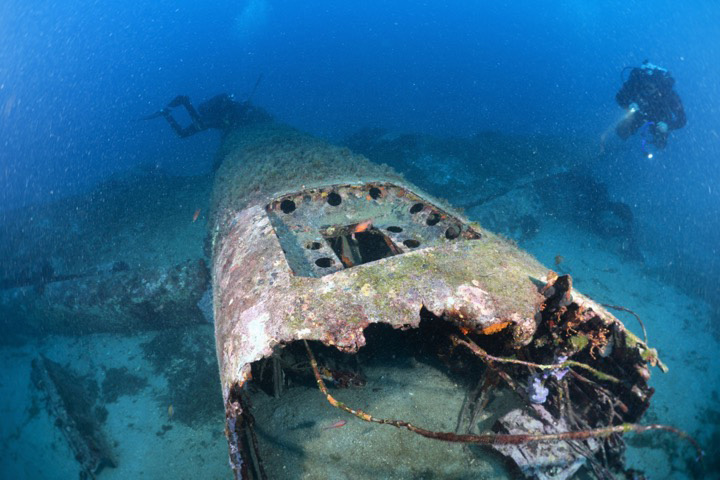
The frantic back and forth
You can imagine my jolt from the chair I was sitting on as I read the e-mails I received. That plane, now far away in my memory, suddenly returned forcefully to my here and now.
I replied immediately asking for specifics and sources.
He answered seraphic: “I was investigating other Ju 88s who had crashed in Tuscany and when I came across the site dedicated to the expedition of St. Catherine, I tried to carry out a short research. That’s all…”
His source is a book, written by an English friend of his, published last year and dedicated to air warfare in the Mediterranean. Chris Shores’s book is actually part of a large-scale work in five volumes, three of which have already been published. It reconstructs the history of air warfare in the operational theater of the Mediterranean and claims to explain the fate of every single airplane lost due to war or accident during the conflict.
He wrote to me: “It is not a book to read, it looks more like a telephone directory than an essay. It’s the stuff of enthusiasts, let’s say, for those who have a particular passion for aviation. “
The Scan
And then he sent me the scan of the page where we find written: 11./KG1 Ju 88 WNr5909 ditched following engine fire 10 km W Gallipoli, 36 km SW Lecce Uffz Kurt Köneke inj, three KiA.
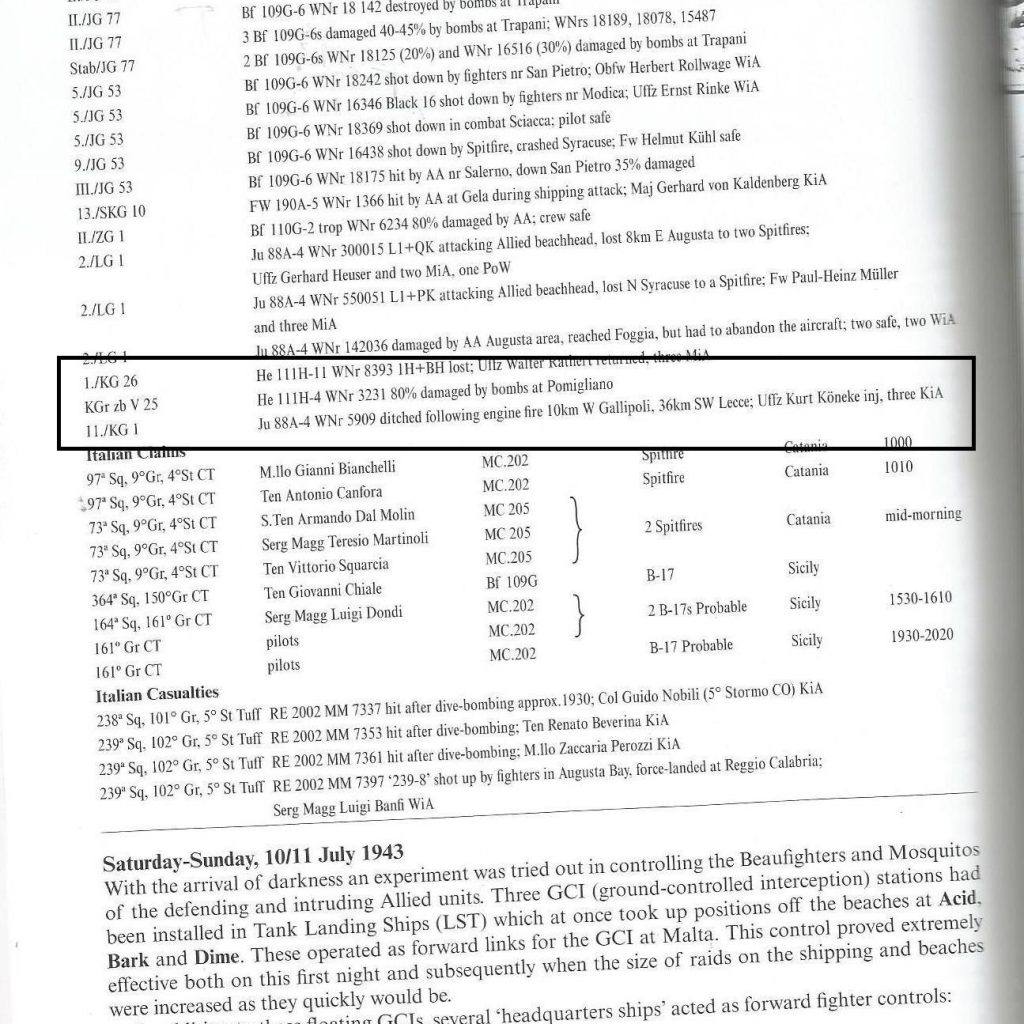
It really could be the answer to all of our questions.
The yellow spot attributable to a K would marry with the membership group number 1 (KG1) which would identify it as a Ju 88 A4. This model, with wooden wings, was a “Schnellbomber”, that is a fast bomber that fell into the category of medium bombers. It was a very versatile aircraft, used in a myriad of different roles: heavy fighter, bomber, reconnaissance, torpedo bomber, dive bomber. The fact that no ammunition or bombs were found could prove that ours was in reconnaissance, as hypothesized during the Ju88 Expedition.
The fire to the engines could also have caused a fire to the propellers, which in fact have not been found.
And then the perfect location. Nardò, the capital, is really about ten kilometers from Gallipoli and about forty from Lecce.
July 10, 1943
That day, nearly all the KGs, the Luftwaffe bombing units based in southern Italy, attacked American and British positions in Sicily.
The plane probably sank due to engine problems while returning from a mission on one of the Allied bridgeheads.
The department was based in Grottaglie.
In short, it seems that the pieces of our puzzle can really come together. I started from a simple dive on a plane that was moored during the Second World War. Little or nothing was known about it, it seemed that it was jealously hiding its secrets, below, in the Salento sea. And then, slowly, with meticulous patience, we opened the casket of mysteries. But there was always a missing piece. That piece that an aviation enthusiast reader may have found.
👌


